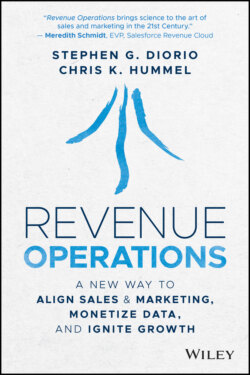Читать книгу Revenue Operations - Stephen Diorio, Chris K. Hummel - Страница 23
The Challenge of Managing 4D Selling Systems How Digitally Enabled, Data-Driven, Dynamic, and Geographically Dispersed Revenue Teams Are Changing the Way We Manage Selling Systems
ОглавлениеA massive shift to work at home, hybrid work, and work from anywhere policies will act as a tipping point for sales transformation and dramatically alter the sales and marketing mix. Budgets are shifting to digital, data-driven, and measurable channels that accelerate the digital transformation of sales.
Remote selling is the “new normal” as the coronavirus pandemic forced over 4 billion consumers, customers, employees, and salespeople to work, sell, and buy from home. The dramatic displacement of revenue teams forced businesses to accelerate their transformation to a more digital selling model to adapt to remote selling and a new buying reality. Lost in the rush to enable remote selling is the fact that virtual selling channels offer growth-oriented companies the potential to transform sales performance and accelerate growth.
The shift to remote buying is having an even bigger impact as customers demand a faster cadence, more complete answers, and more personalized content at every stage of the customer journey – regardless of whether they are talking to an account rep, Business Development Reps (BDRs) product specialist, or customer service manager. “As B2B buyers' increasingly use digital channels and information in the customer journey, it is reshaping how B2B sellers engage with them,” according to Brent Adamson, Distinguished VP, Advisory, Gartner.160 “This presents a huge challenge to B2B revenue teams because our research tells us that most B2B buyers under the age of forty would prefer not to talk to sales and service reps at all, if it were possible, and they can see no difference in the digital buying experiences of most of the companies they try to buy from. It is going to be mission critical for reps to make the most of the moments that matter during this buying cycle.” That means building buyer empathy, sharing more compelling content, asking smarter questions, and having conversations that build trust, communicate the financial value of their solutions, and reveal the nuanced differences between their competitors.
The shift has changed the ways businesses sell to customers by:
1 Redefining field selling economics and capital investment. From a sales perspective, sales executives have embraced the notion of remote selling channels as a way to sell more for less. Virtual reps offer the selling capabilities of a high-end field sales rep, but the visibility, coverage, cadence, and productivity of digital and direct channels. The shift to virtual channels will have a dramatic impact on the economics of selling in terms of big reductions in sales travel and real estate overhead and the increased use of technology and skills to leverage and enable sales reps in digital channels.
2 Creating a burning platform to redefine the customer experience. From a marketing standpoint, over 80% of CMOs viewed the pandemic as a big opportunity to redefine the customer experience in digital and virtual channels and change the way they reach and engage customers (e.g. media mix, channels). This sentiment is being reflected in the way CMOs are reallocating their budgets in the recession. For example, 81% of traditional businesses are increasing investment in digital technologies to improve market coverage and client engagement.5
3 Accelerating the adoption of advanced communications, enablement, and visualization technologies. From a technology perspective, the pressure to adapt to this new buying reality is accelerating the adoption of existing but grossly underutilized technologies that offer the potential to multiply seller performance. These include algorithmic selling, sales enablement, 5G communications, direct-to-consumer (DTC) channels, and even augmented reality. Properly designed and equipped, virtual selling channels can dramatically improve the coverage, control, and cost-effectiveness of sales channels while offering buyers the speed of response and experiences they demand.
4 Creating massive new customer and seller activity data sets. “An explosion of sales engagement data has become available to analytics teams in the past 24 months,” according to Len Ferrington, a managing director of Summit Partners. “This data is coming from first party systems, email, calendars, third party sources, recorded sales conversations (via Zoom, Teams or transcripts) and contactless selling platforms (like text and chatbots).”159 The number of recorded sales calls has gone up thirtyfold since the start of the pandemic.
5 Elevating the importance of analyzing customer sentiment and nonverbal cues. “The rapid growth of virtual selling is creating a need for AI and analytics that inform the EQ of selling to help sales reps better understand customer sentiment, response, and relationships in the absence of face-to-face conversations,” reports Professor Iyengar of Wharton.18 “Businesses will need to find ways to use new data from customer transcription and digital engagement platforms like Zoom, Teams, or Cisco Webex to understand customer emotions and all the non-verbal elements of selling.”
6 Forcing sales operations to improve visibility and transparency. Gaining access to real-time commercial insights into account health, opportunity potential, seller, and pipeline performance are now essential to managing the performance of digital, displaced, diverse, and dynamic revenue teams. These are regarded as the top drivers of remote sales productivity by sales managers and performance professionals.
